The trendy East End of London is calling
Without the fear of sounding too old and honestly, I’m not, but, “wow hasn’t Spitalfields changed”.
Occasionally I used to head to Spitalfields after work to cheer on my work colleagues, playing on the 5-a-side football pitches. Then grab a quick drink in one of the local rustic pubs nearby.
Not anymore, I had to seriously rack my brain to convince myself that it was the same location. Genuinely, there used to be football pitches back to back, row after row, under a cold wrought iron open-sided warehouse.
Now after the wand of regeneration has been waved, it was like strolling into a completely unknown area of London.
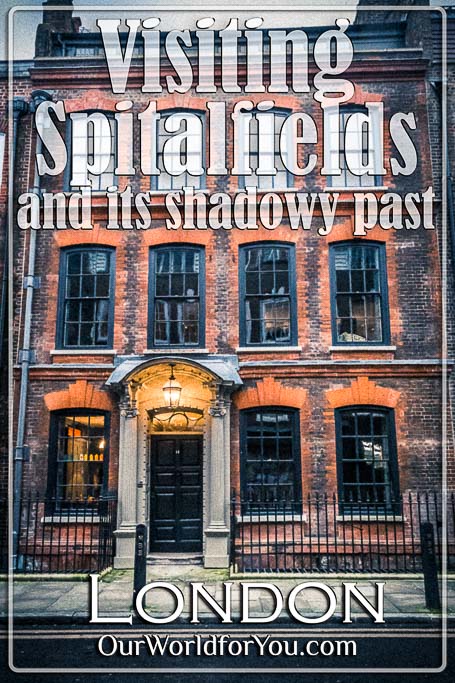
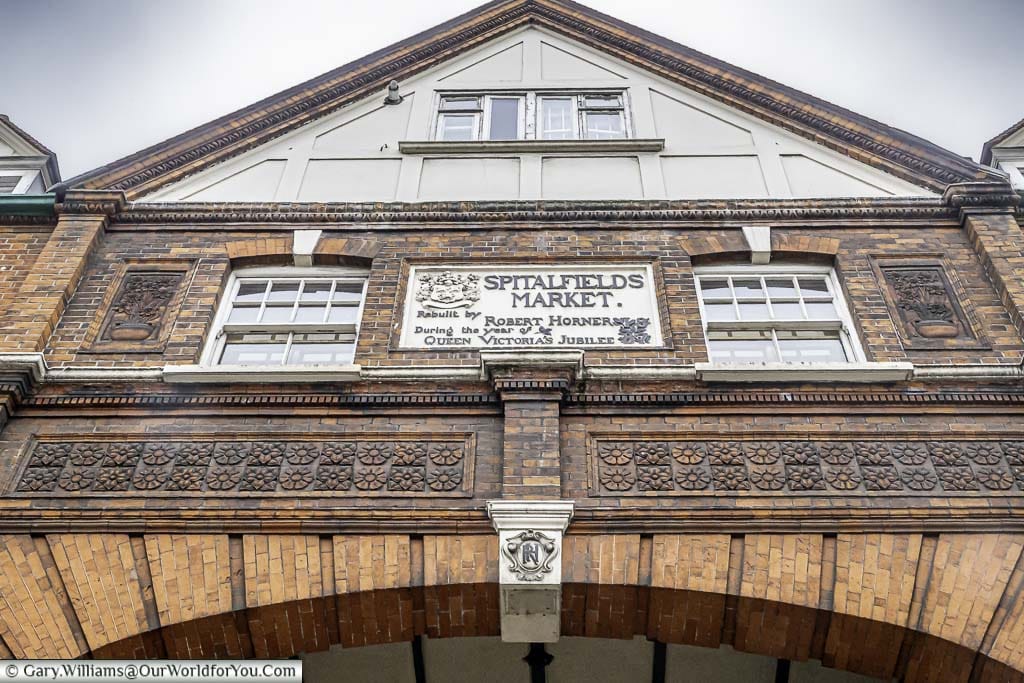
Don’t get me wrong something needed to happen, as it wasn’t a district of London that you used to head to with open arms, well, not me anyway. Although I can understand, the effect that this gentrification may have had on the locals.
Visiting Spitalfields was now like discovering a new part of the city and boy, does it have an intriguing past.
Where is Spitalfields?
How to get to Spitalfields
- By Train
Spitalfields is right near the overground train station of Liverpool Street Station.
The underground tube lines that stop here are the Central , Hammersmith & City , Circle and Metropolitan .
Don’t forget if you have a contactless bank card, or a card assigned to your phone you tap and pay with that. (For more check out the TFL site (Transport for London))
Discovering London
A little bit of history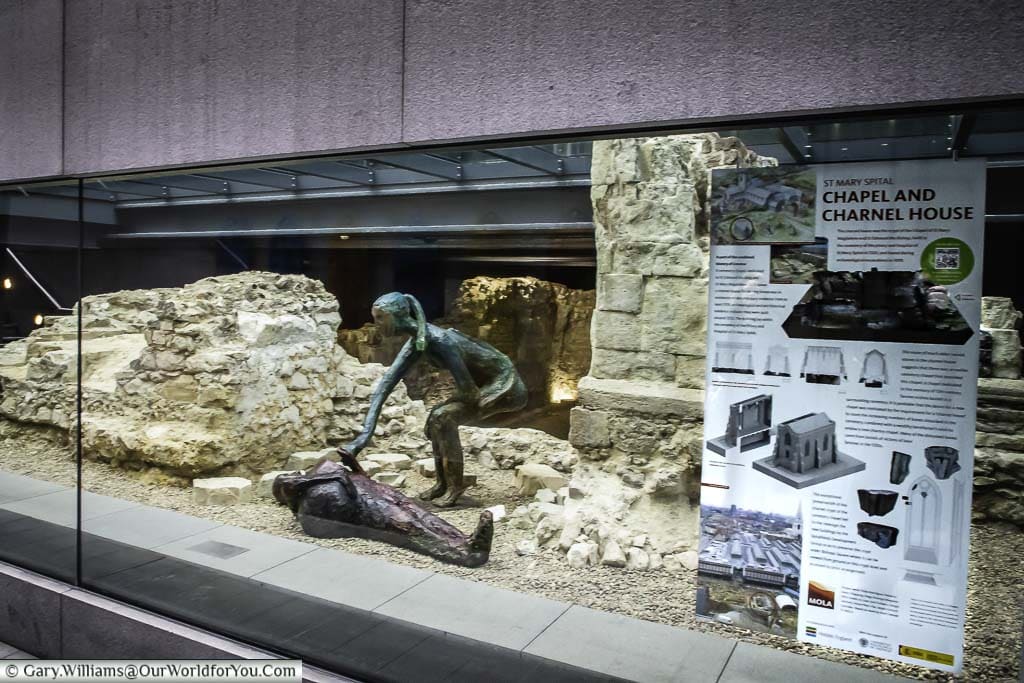
Whilst excavations were being carried out in 1999 a charnel house was discovered. This historic underground building was used to store bones from famine victims dating from the 1250s.
During the late 1600s, this small region of London also became home to fleeing French Huguenot silk weavers. A little more of that later.
A walk through the east end of London
Streets with a past
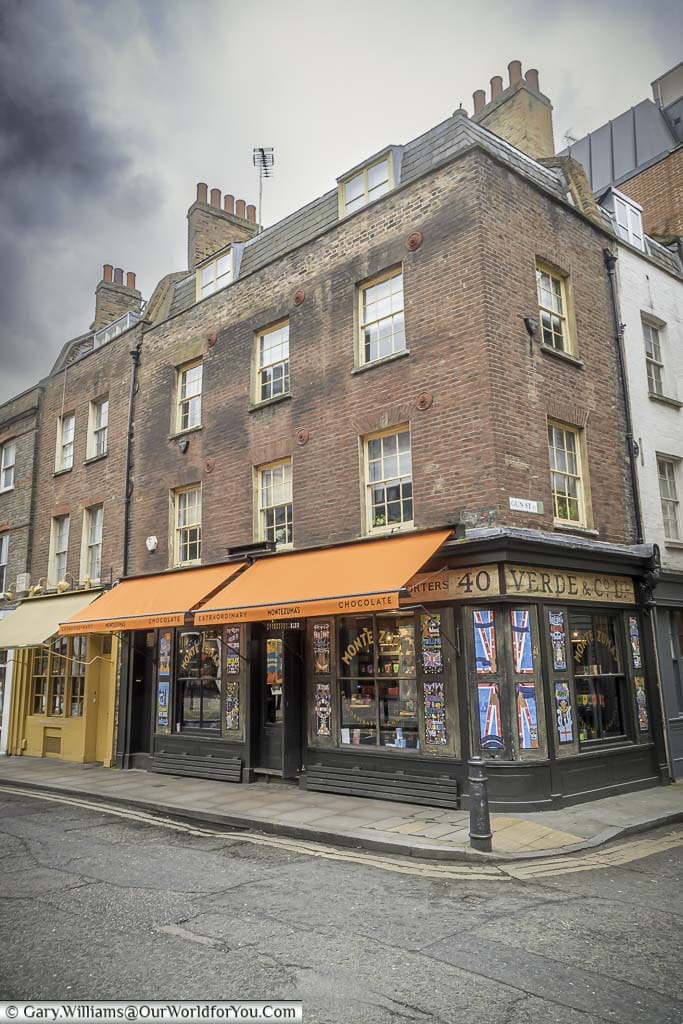
Then as we headed down the end of Gun Street, (there seems to be a military theme here) there’s a charming old shop named Verde & Co. I had since read that a lady bought the property which dates from 1789, in 1996ish, when it was derelict. She restored it to its former glory, using its original features where possible and opened it as a welcoming deli for the locals.
Although the Verde & Co. shopfront is still there, it has now changed hands and is a chocolate shop.
We have a little book on our shelves that we sometimes delve into when we're about to hit an area of London.
Packed full of historical facts, and broken down into the different regions of London, it's a great resource to help you see what's hidden in plain sight.
Available in Kindle & Hardback editions, it's an excellent addition to anyone's collection who loves London.
Exploring London
A voyage of discoveryOne of the reasons we wanted to visit rejuvenated Spitalfields, was to stroll its ancient streets and wander in the footsteps where so many tales could be told.
All along Folgate Street are beautifully restored elegant homes. It’s so reassuring that these stylish dwellings are loved once more.
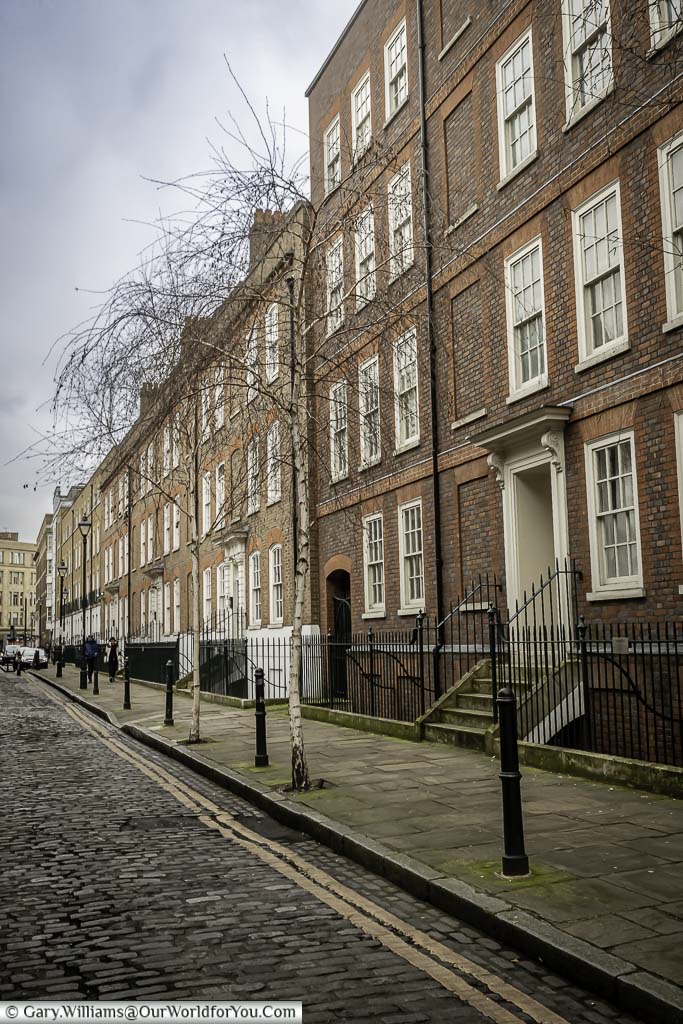
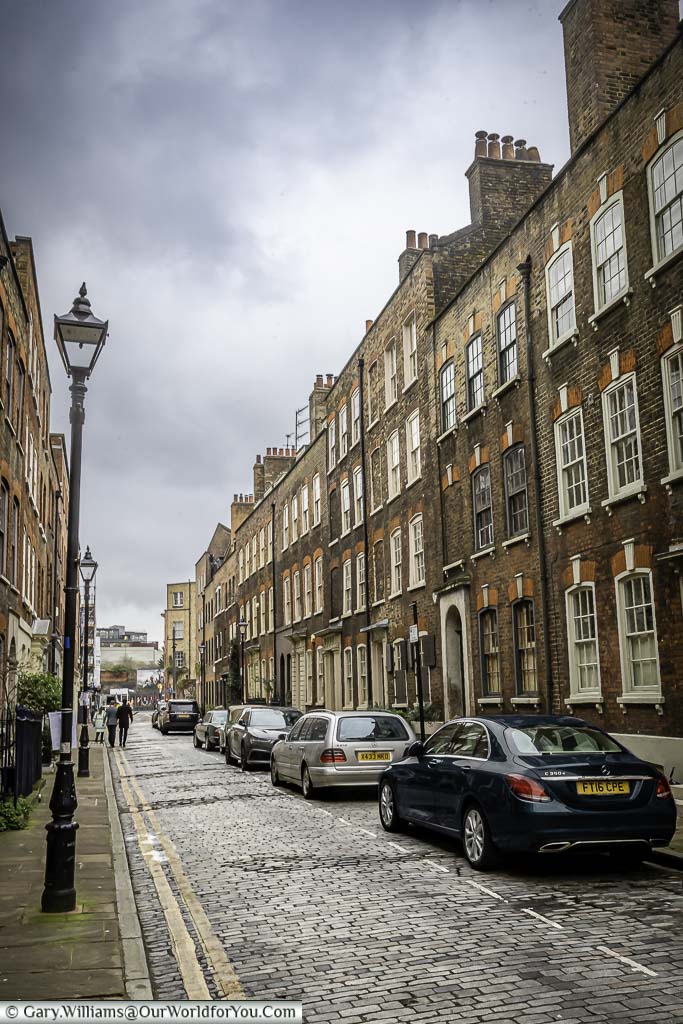
A fascinating street architecturally was Elder Street. If there weren’t the little characteristics of modern-day life dotted around, you would really believe you’d stepped into a different era.
What is wonderful around this district of London is that it’s not just all about the quaint and graceful. There are some beautiful large imposing buildings too.

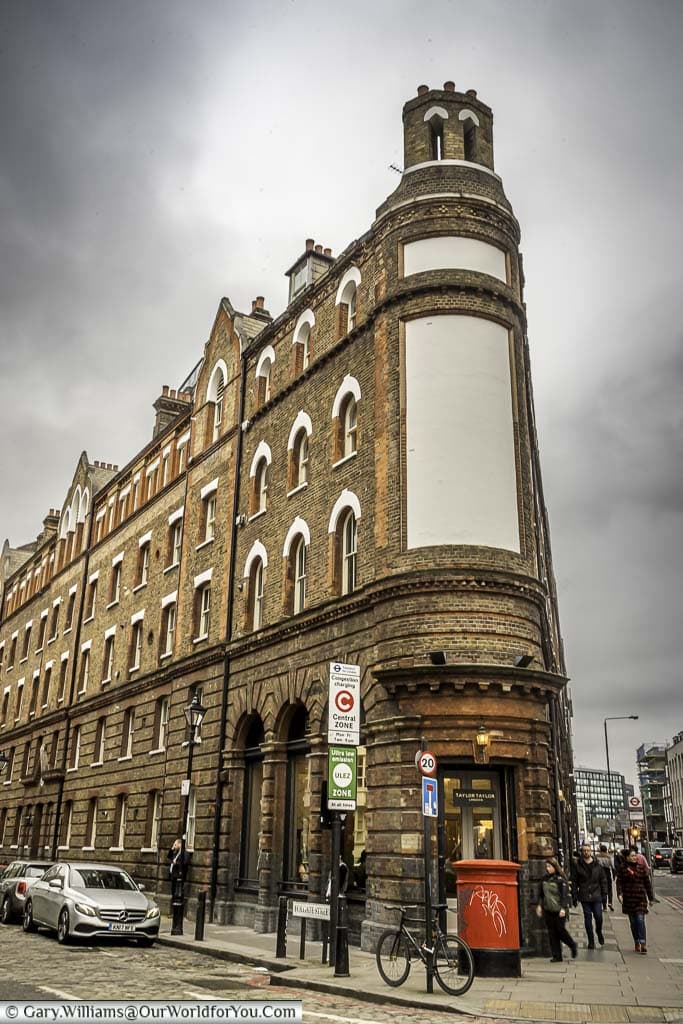
Where to stay in London
If you want to stay in the heart of Spitalfields, there are plenty of choices. This can be your base to discover the east of London, the City of London, and much more besides.
There are plenty of choices, why not check out Booking.com for something that suits your requirements?
Shopping in London
Spitalfields MarketOld Spitalfields Market is stylish, quirky and has such a relaxed and friendly atmosphere, I loved it.
There is a market here seven days a week offering that little something different. Either in retail therapy or if you fancy sampling some food that mirrors the diversity of London, this is where to head.
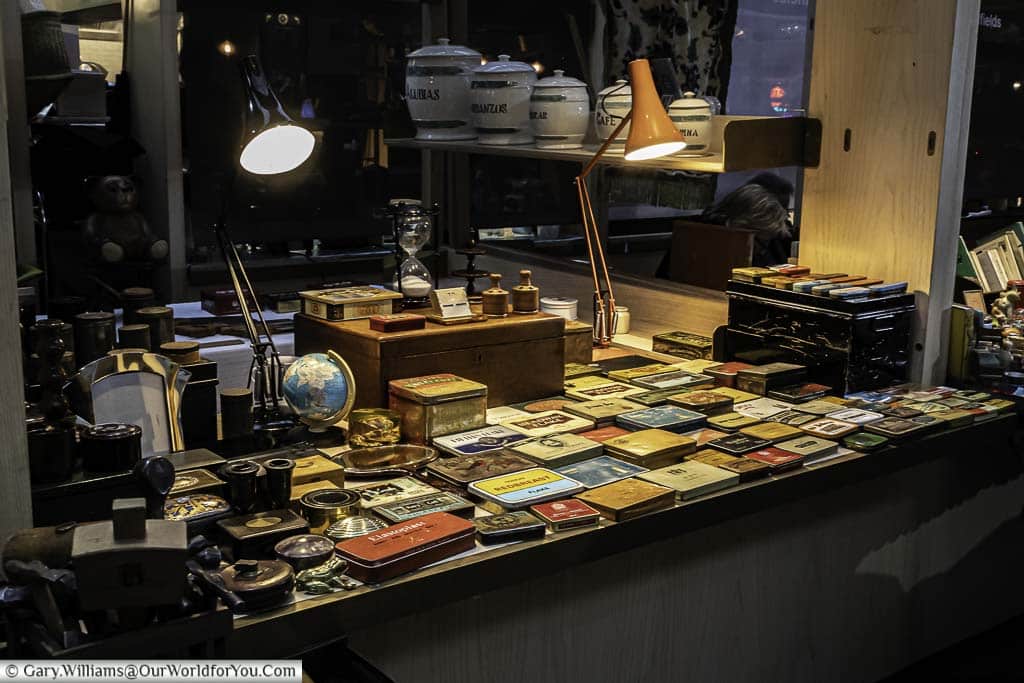
The fruit and veg market that once stood here has moved out further east to Leyton. However, traders have been operating here since 1666, the year of the Great Fire of London.
We stepped into the covered market, and I couldn’t wait to go and explore, so much so that I lost Gary on several occasions.
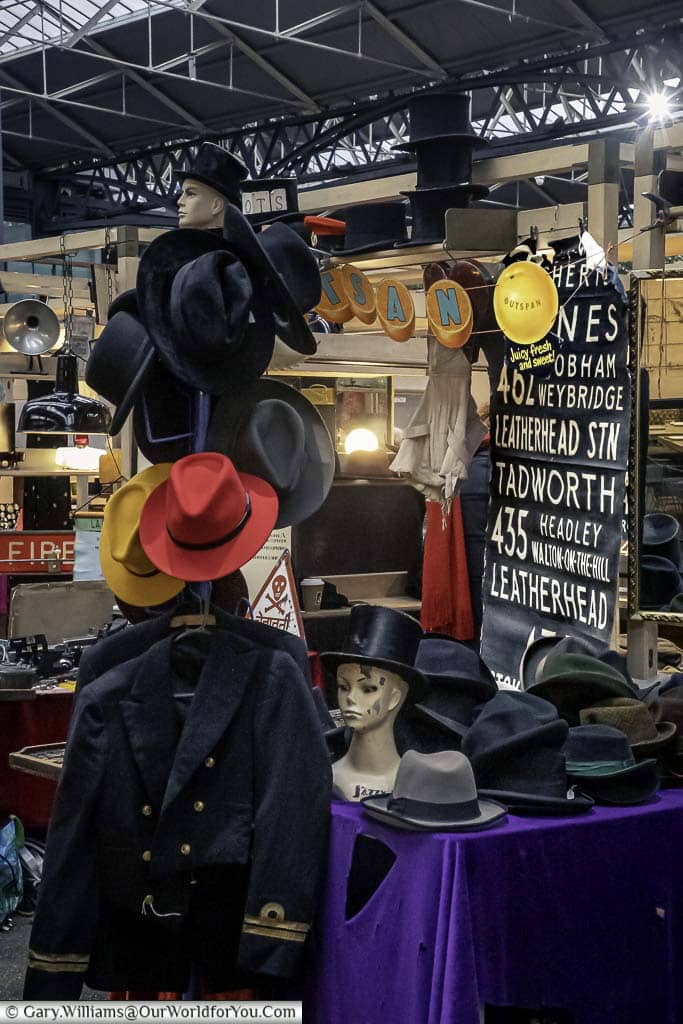
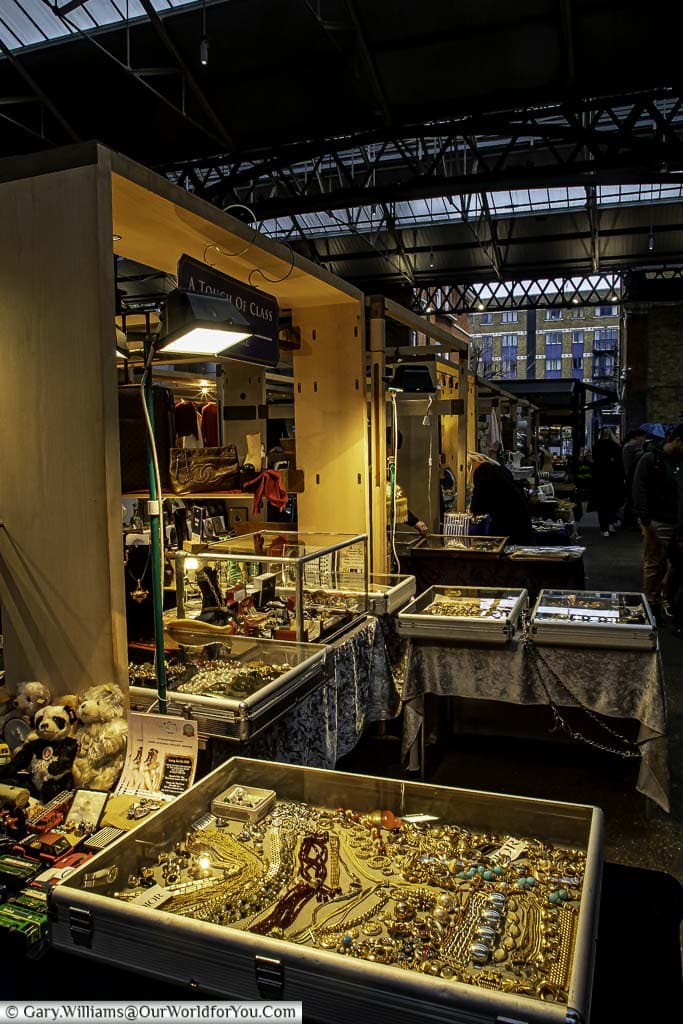
Whether it’s because of its location in the East End of London, but it certainly attracted people from all walks of life. From the very young to very old, from bohemians to the older EastEnders. Some of which appeared to be unsure of what to make of it.
Although what’s lovely is that everyone is welcome.
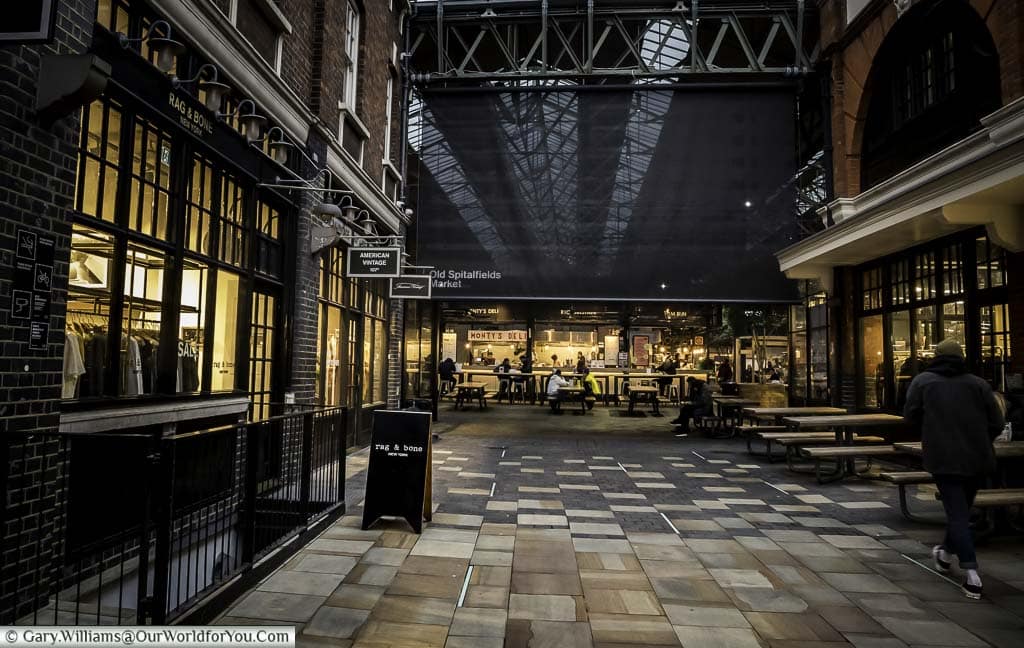
It had such an eclectic assortment of stalls, from vintage clothing, antiques, bric-a-brac, old satirical prints, millinery stalls. Also a chance to grab that old LP you’d been hunting down for years.
If secondhand isn’t your thing, then step out to the surrounding trendy boutiques and you are spoilt for choice.
When and where to go
A touch of London's history
Is that a brewery?Perhaps a little refreshment is now needed, along the lines of the beer variety.
In and around Brick Lane and Spitalfields is where it all started for Truman’s Brewery.
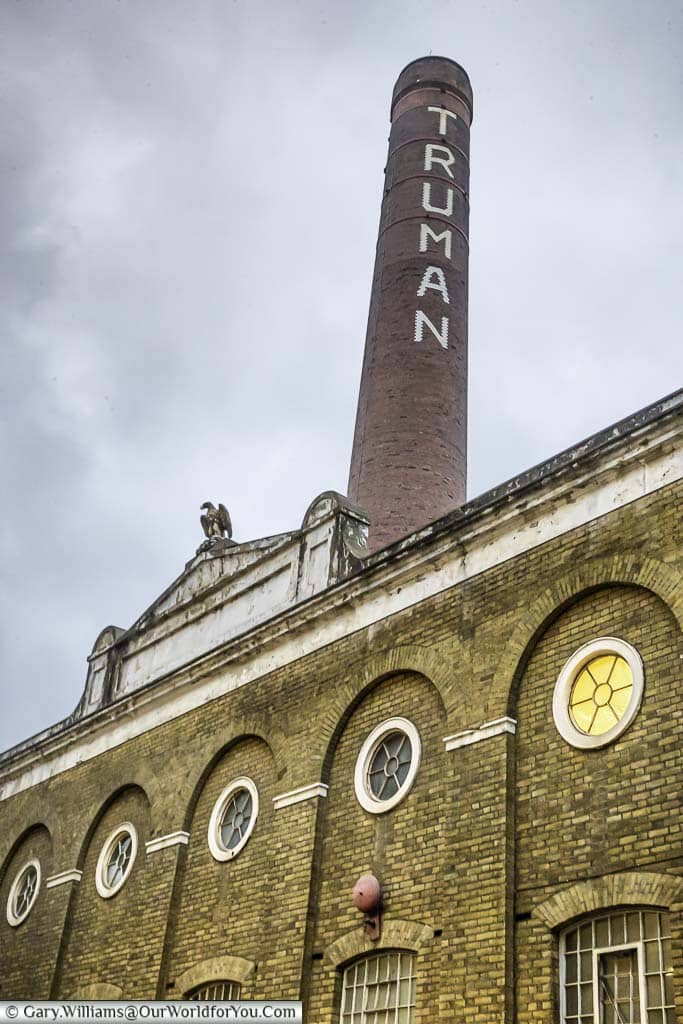
The brewery was established in 1666 and for a short time in the 1800s was the biggest brewery in the world. You used to see Truman’s pubs throughout London, then in 1989 it, unfortunately, it closed its doors.
But hey, like a phoenix rising from its ashes, in 2010 Truman’s was re-established and Black Eagle Brewery took the reins. They are now brewing again from Hackney Wick.
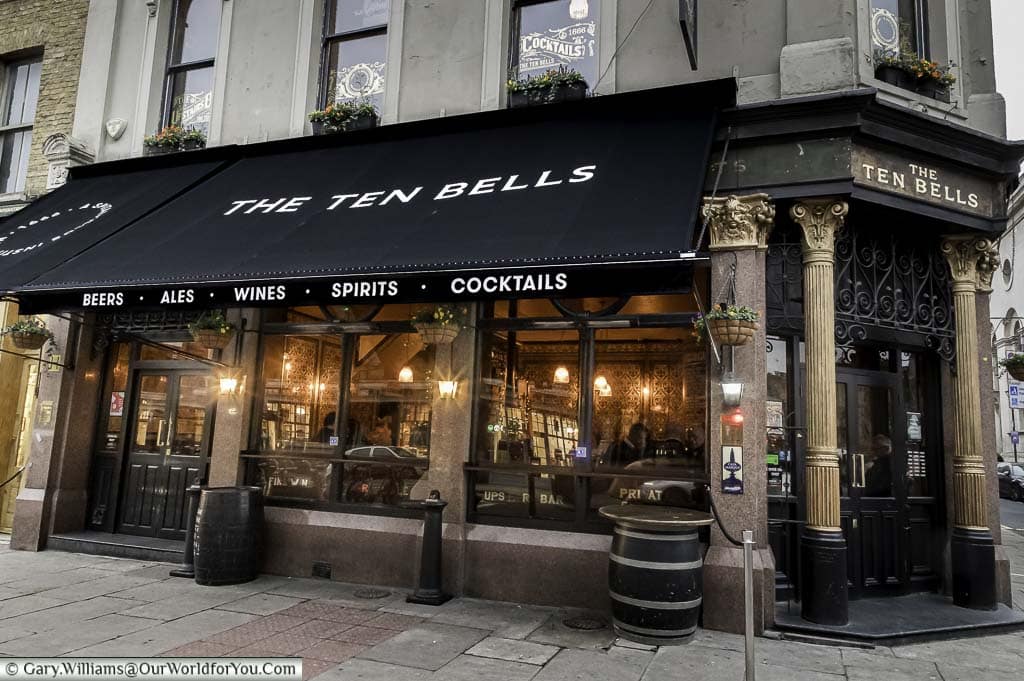
If you've yet to discover London and its ancient history, then let's start planning. I find these DK Eyewitness Travel Guides invaluable. They're extremely informative, easy to follow, and the pictures and maps tempt you into discovering more of those fascinating sites.
You can now grab a recently revised copy of this guidebook, so you won't miss a thing.
London's little treasures
A second chance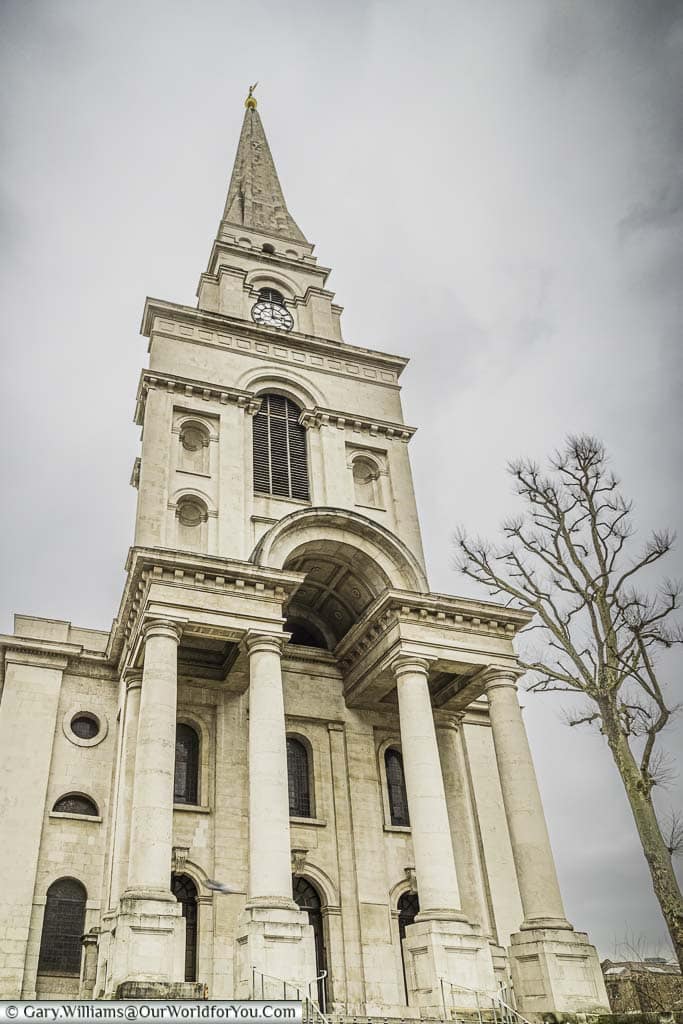
Although Christ Church looks wonderful throughout today, it was almost derelict in 1960 and declared unsafe to enter.
The complete restoration took place, and its doors reopened in 2004. In 2014 the organ was fully restored followed by the crypt in 2015.
A hidden gem in London
Elegant Georgian StreetsThe few streets between Commercial Street and Brick Land are incredibly fascinating. They really give you a feel of being lost in a moment in time.
All along Fournier Street, are stunning examples of Georgian homes, these were built during the early 1700s. Due to their high quality and location, many were purchased or rented by the French Huguenot silk weavers, that had fled France.
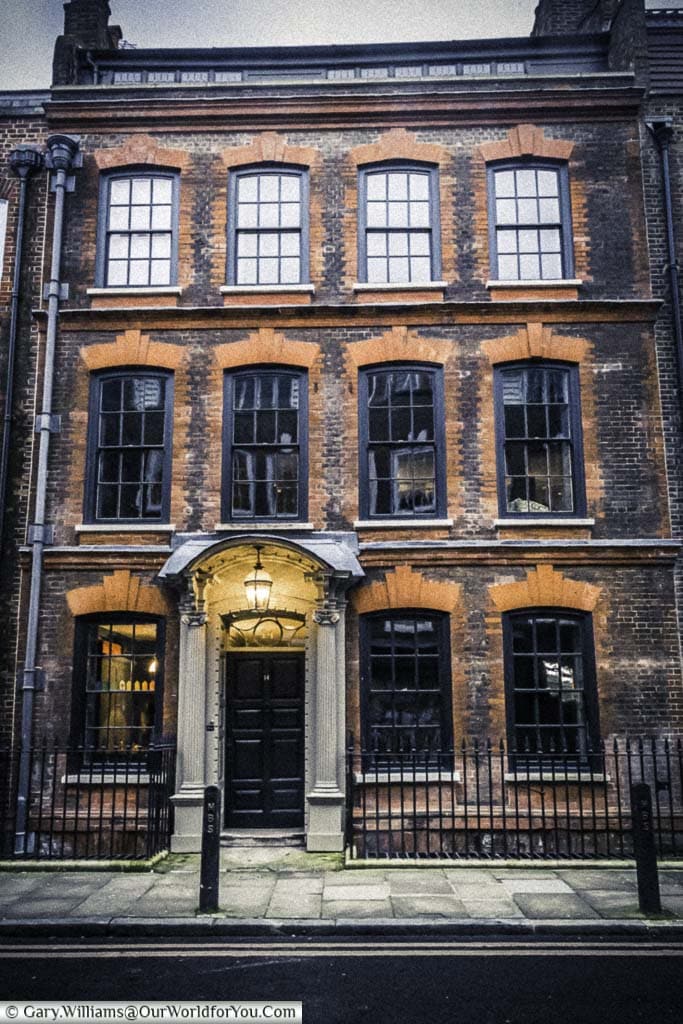
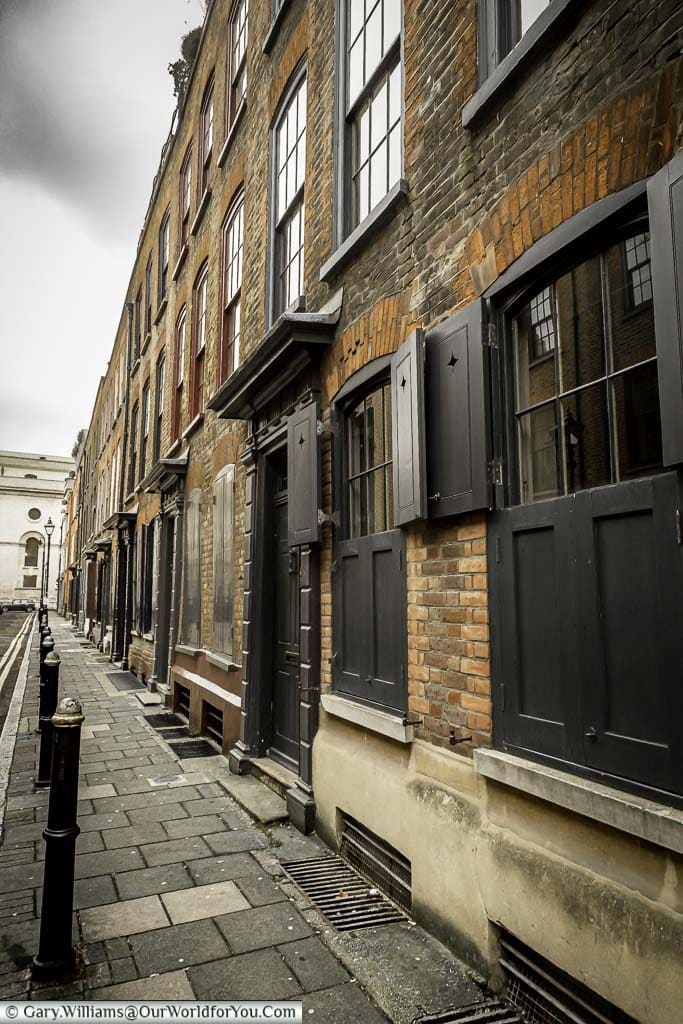
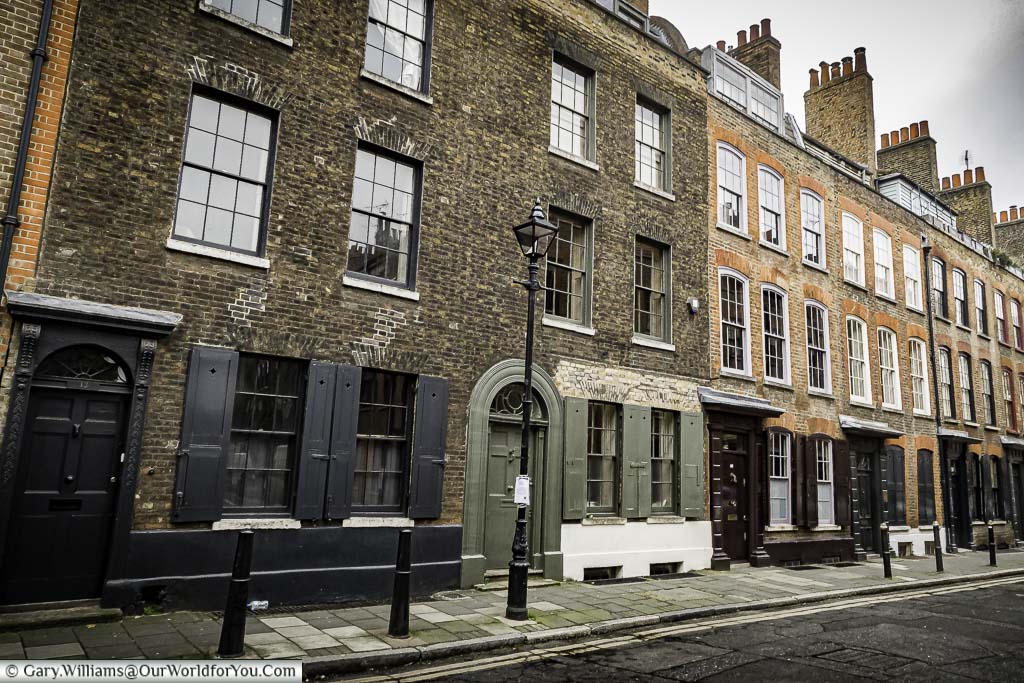
Take a stroll all along Wilkes Street, this road is full of beautiful homes, old-style streetlamps, Georgian sash windows and heavy wooden shutters keeping out London life beyond.
Although these streets and homes have now been gentrified and the residents have certainly changed. You can just imagine the murky London mist falling upon the dark Georgian streets where Jack the Ripper once frequented.
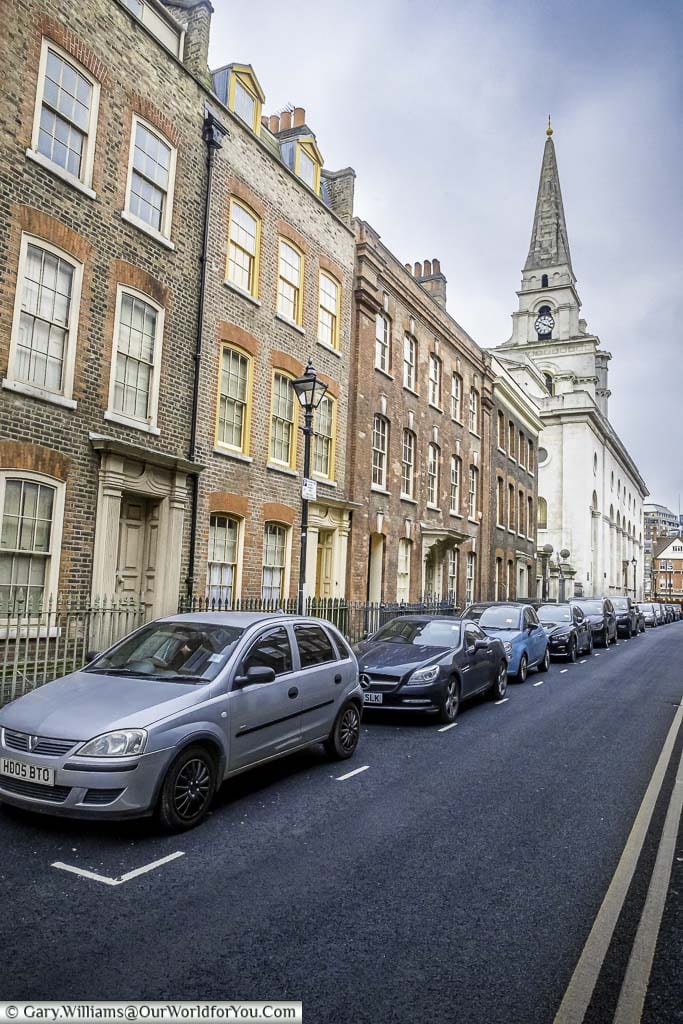
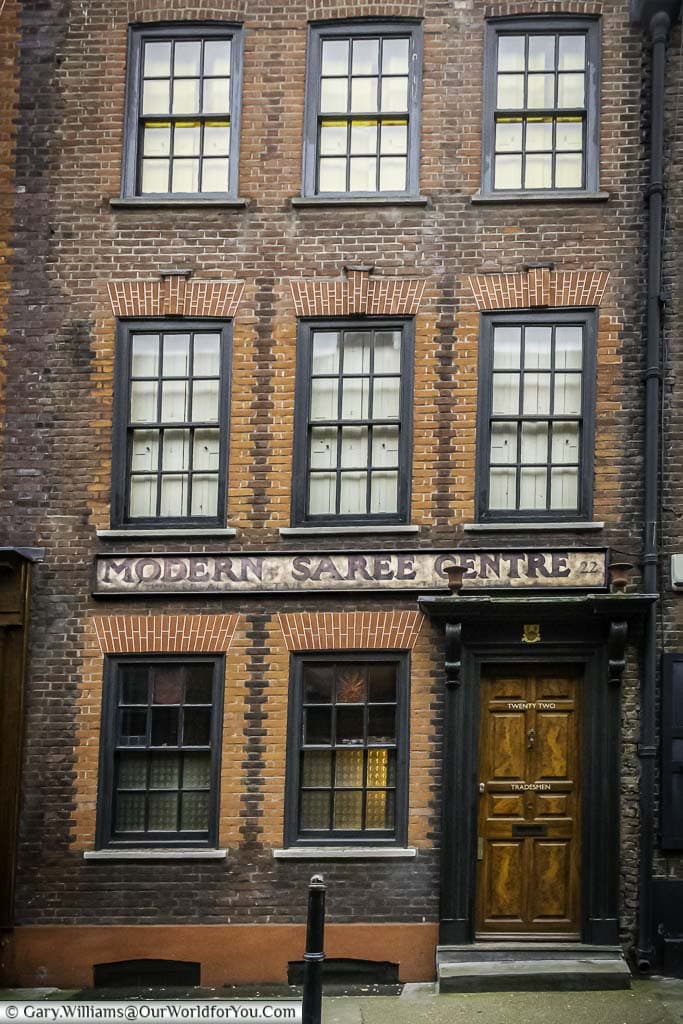
Take a wander through Puma Court where you’ll see old Almshouses and then head down Princelet Street. This is another Georgian road that would have been home to silk weavers and overflowing with style.
I loved it around here.
It’s good to talk!
A taste of the East End
Brick Lane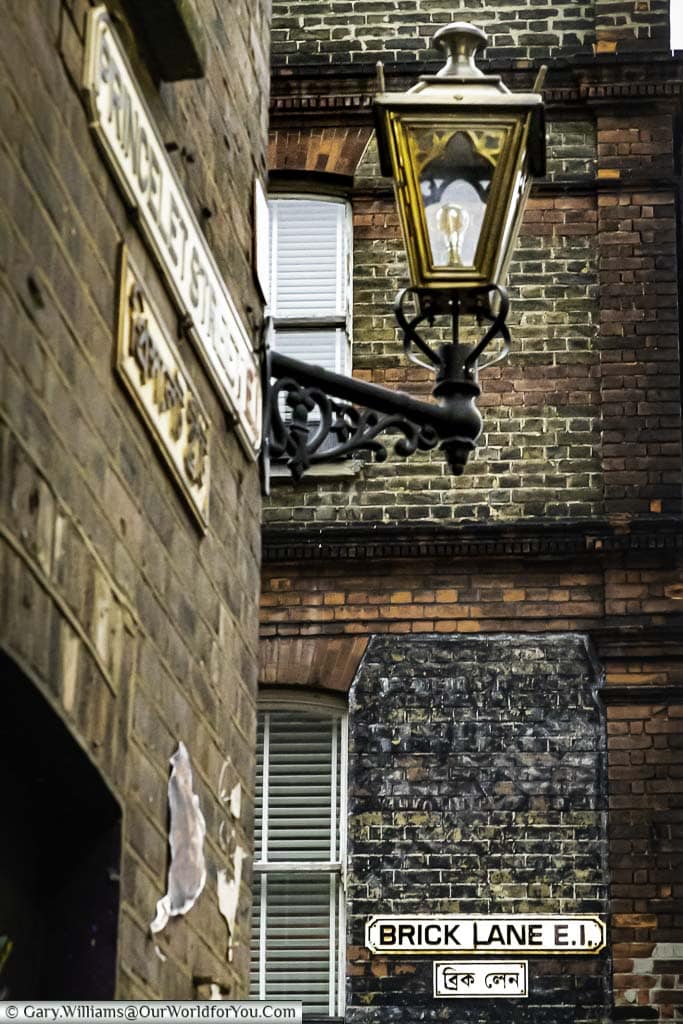
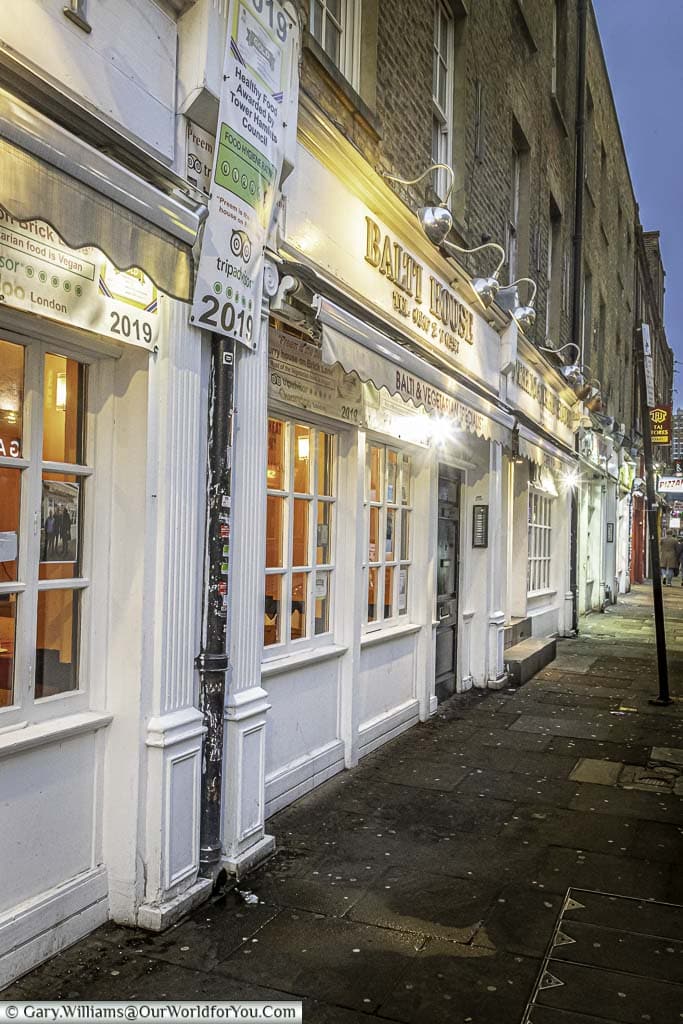
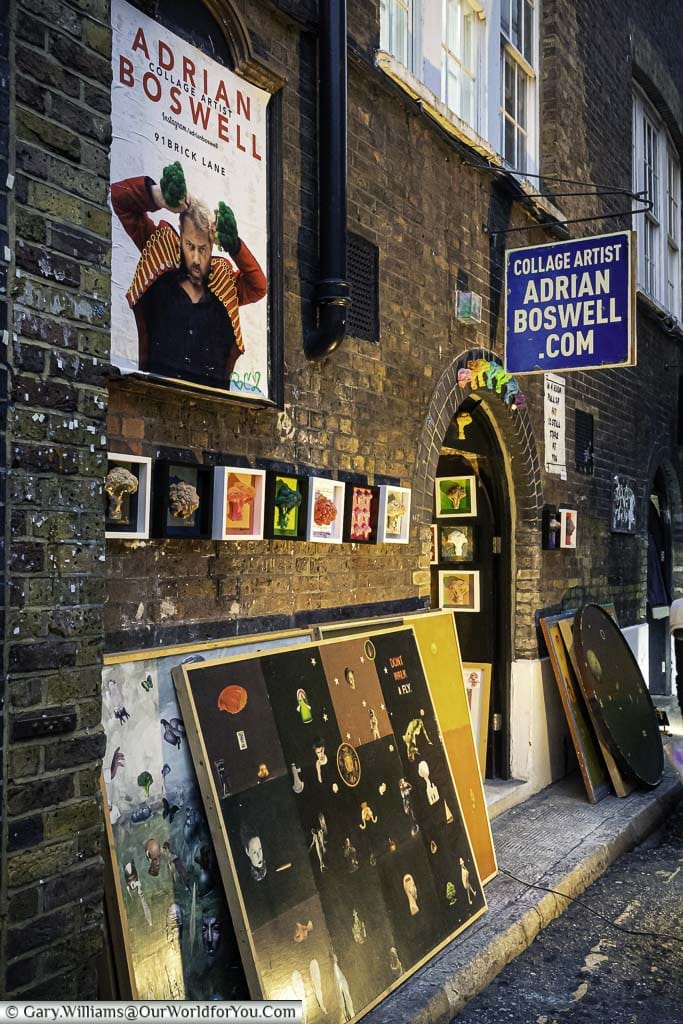
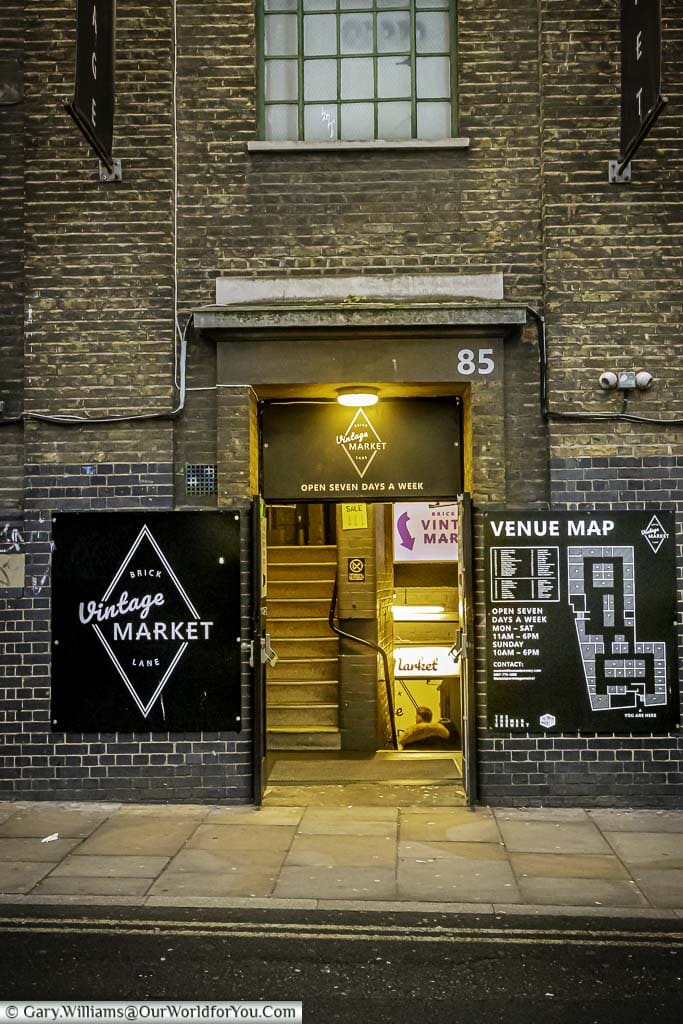
Once the dark side of London
Whitechapel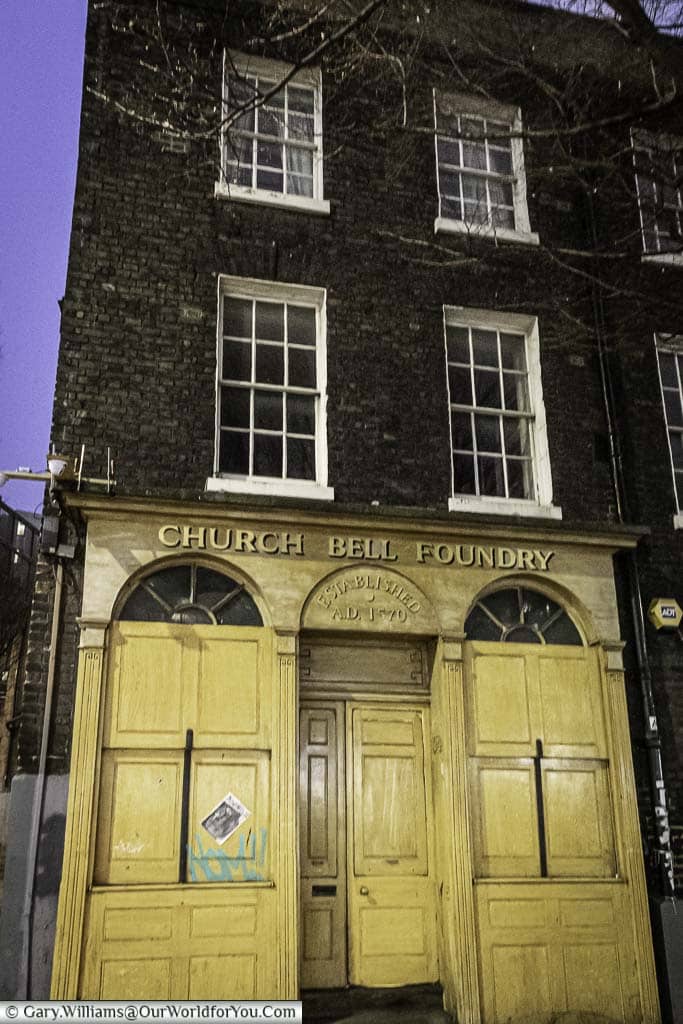
This area of London has certainly had its fair share of dubious goings-on.
What with it being the location of Jack the Rippers ‘Whitechapel Murders’ and also home to the Blind Beggar pub where the infamous Kray Twins frequented.
However, on a lighter note, it was at 32 Whitechapel Road that Philadelphia’s Liberty Bell and London’s Big Ben were made.
The Whitechapel Bell Foundry was established in 1570, unfortunately, in 2017, it closed its doors for the final time.
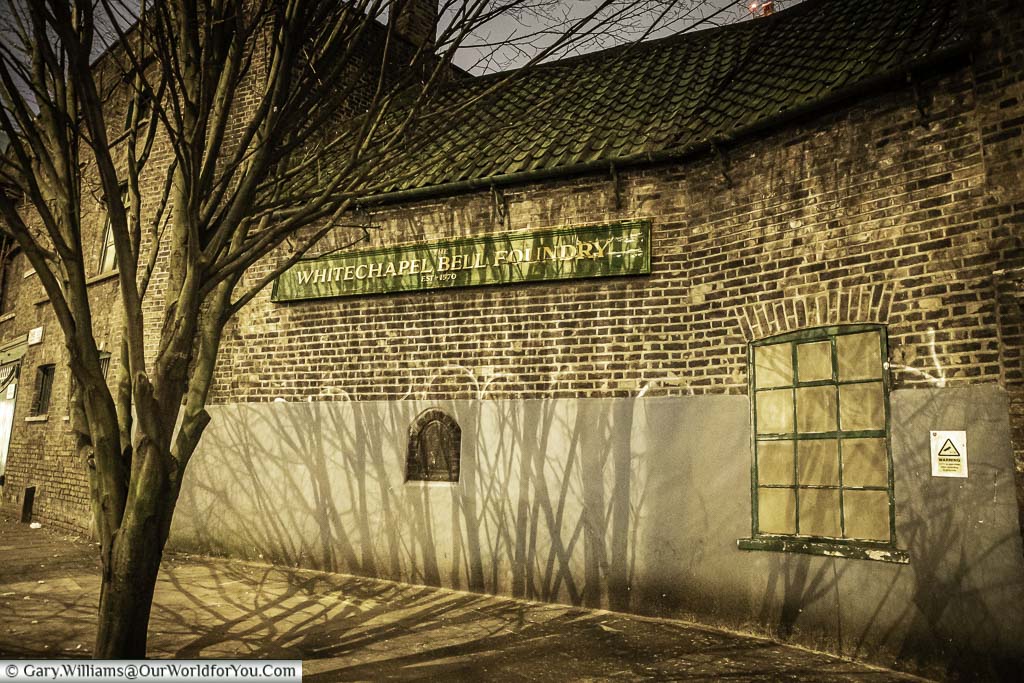
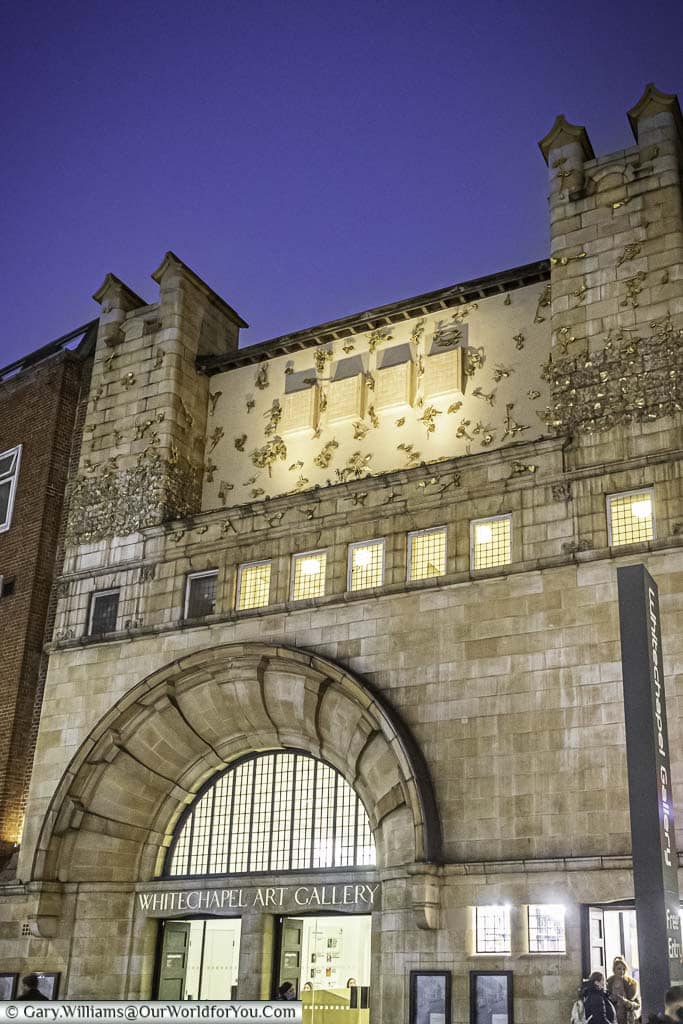
The gallery opened in 1901 and has held some very notable exhibitions over the decades.
It has displayed work by David Hockney, Frida Kahlo, Mark Rothko and Jackson Pollock to name but a few.
Explore London on foot
Quirky findings
Hidden in plain sightAs always when we’re visiting London, we love to seek out an interesting blue plaque or two. We came across four in around Spitalfields and Brick Lane, although there may have been more.
The Blue Plaques that we stumbled upon were for Mark Gertler, Painter (1891-1939) along Elder Street. One for Bud Flanagan, Comedian and Leader of the ‘Crazy Gang’ (1896-1968) at 12 Hanbury Street. Anna Maria Garthwaite a designer of Spitalfields Silks (1690-1763) in Princelet St and along Brick Lane we spotted one for Sir Thomas Fowell Buxton, Anti-Slavery campaigner (1786-1845).
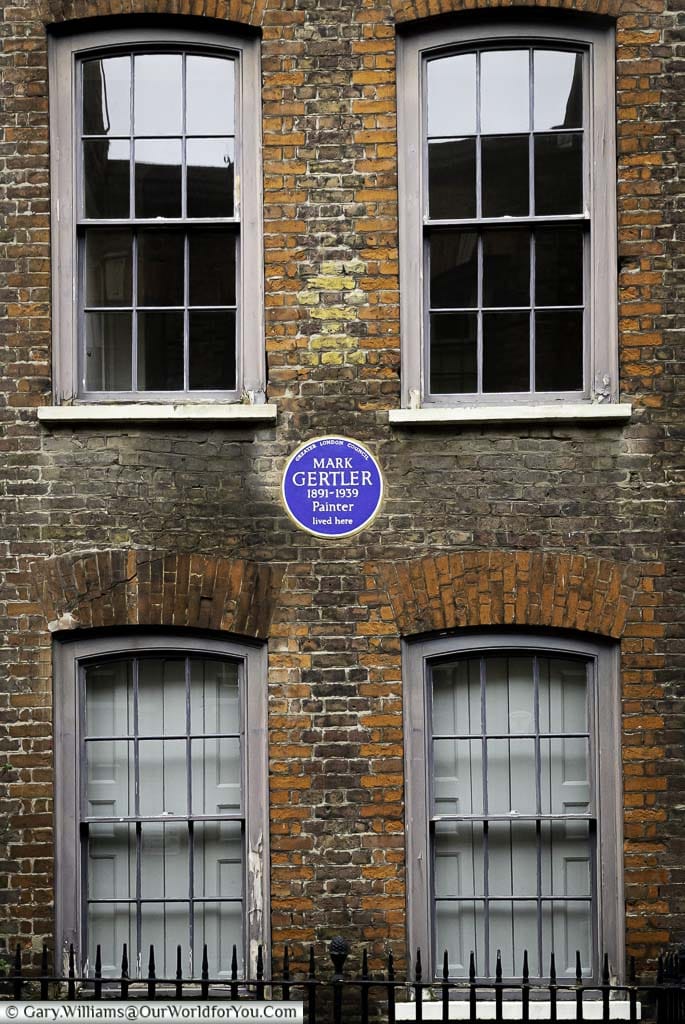
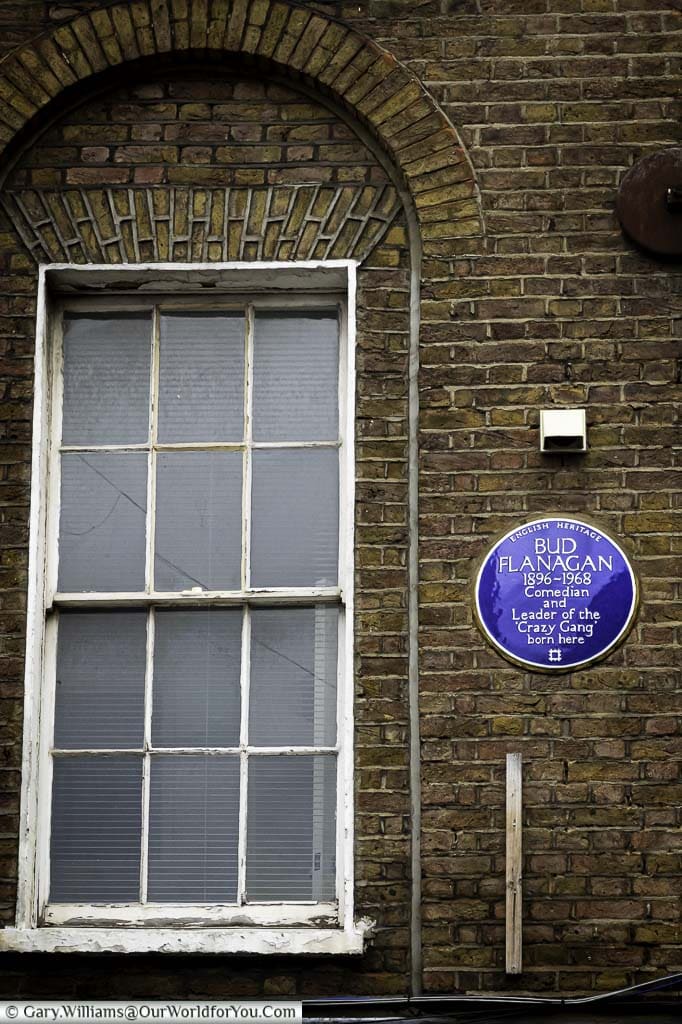

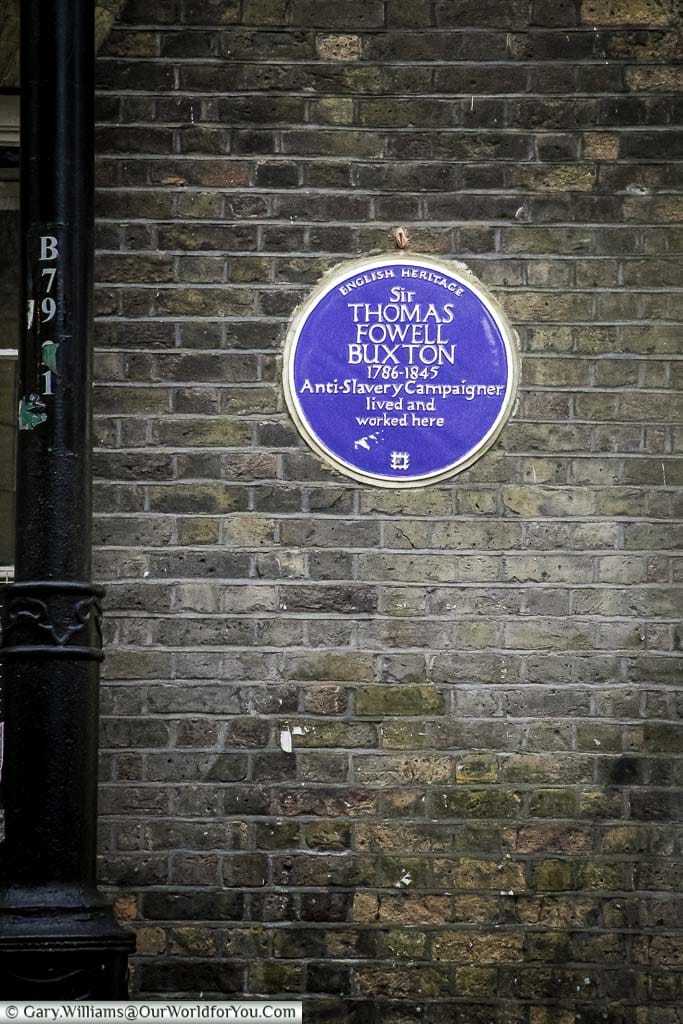
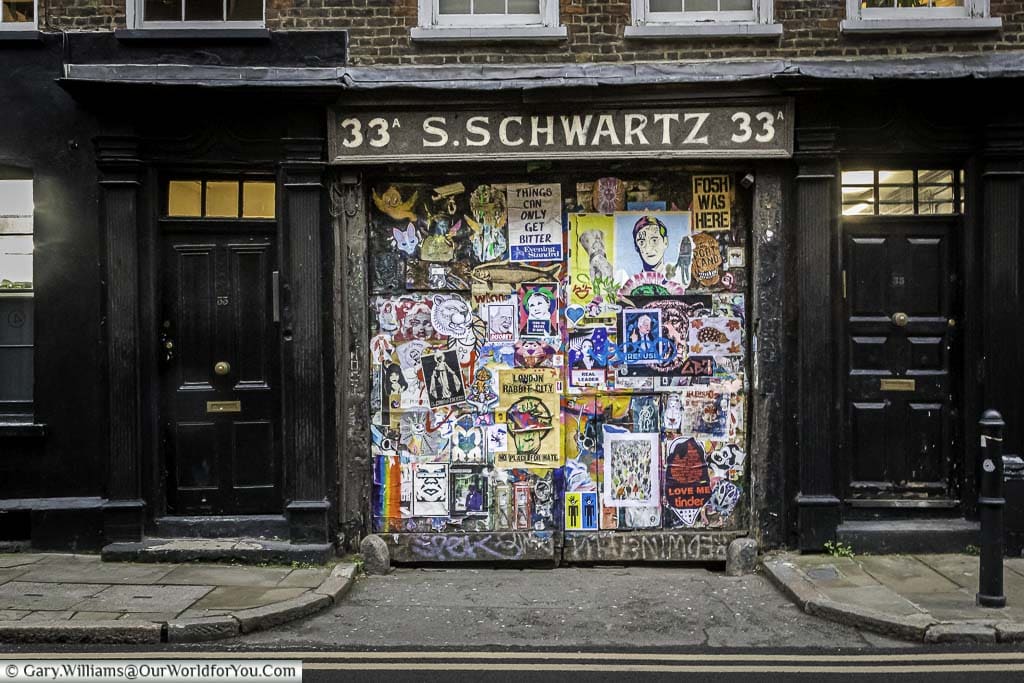
* This post may contain links to affiliated sites where we earn a small commission at no additional charge to you.
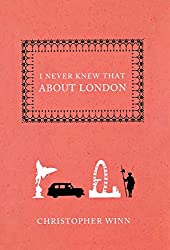


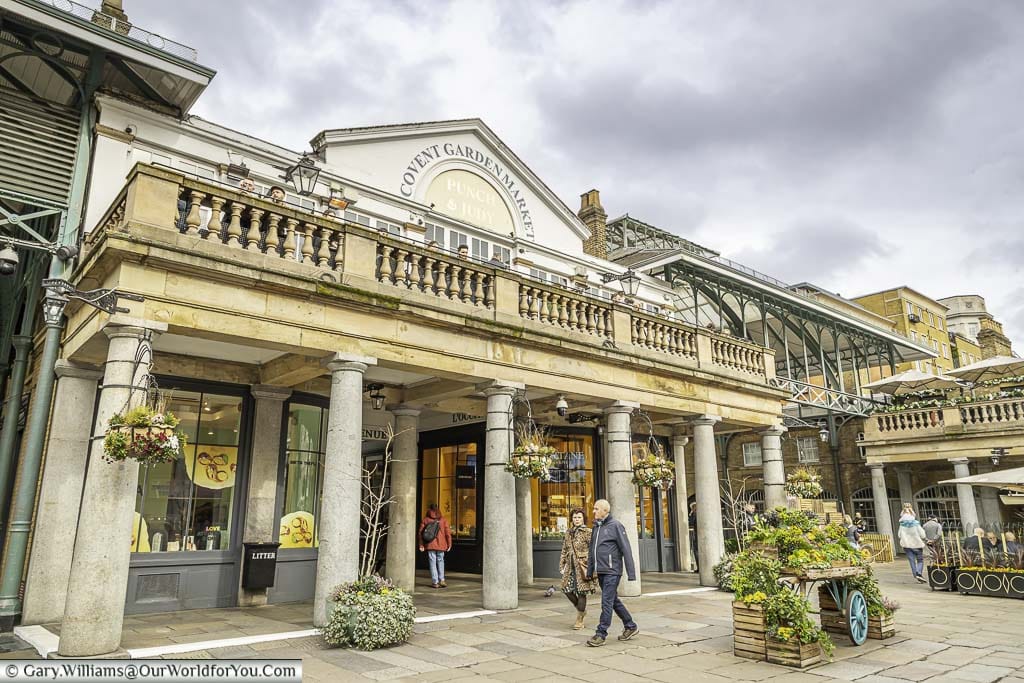
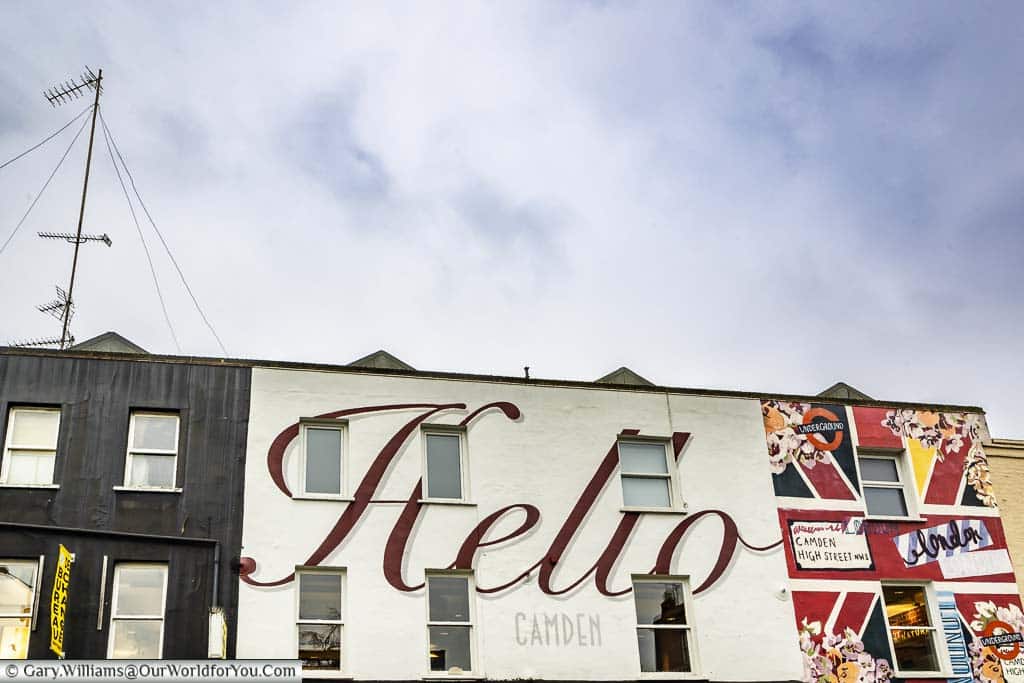

Ohhhhh one of my most favourite parts of London. I admit to being biased as I I hail from the East End, but I just love it here. It just feels like Old London still, even though it has all the new shiny bits! We went into the Dennis Weaver house in Folgate Street not long ago. Its quirky and still set up as it would have been from the 1700’s onwards. Fab little attraction. I so enjoyed this walk around my part of London with you, lovely post #FarawayFiles
There’s nothing wrong with being biased about London, I love it too. You must know it pretty well around Spitalfields, it had been a while since I’d visited, so it had certainly changed. However, like you said it does have its shiny new bits, but wandering around some of the old Georgian streets you wouldn’t realise it.
I went to Brick Lane for the first time a couple of weeks ago and was blown away by the number and scale of the markets. There was so much to see, I didn’t manage to get to Spitalfields but it is firmly on my list for my next visit. Can’t wait! #Farawayfiles
Yes, it’s amazing around there and such a friendly vibe. Ohh you must definitely head to Spitalfields and take a stroll around Fournier, Wilkes and Princelet Streets. It like stepping into another era.
I do enjoy visiting Spitalfields Market – try to go at least once a year, a great part of London! #FarawayFiles
I definitely think we will be returning, it was great. We may well discovery more around Brick Lane too.
Pinning this for my next visit to London! I have visited the area in the past but you have pointed out so many interesting places to see and visit. Thank you! #FarawayFiles
Excellent, it is incredible just within a few streets how much history there is, so often we walk by places just not realising its past.
Ahhh – this is an area of London I think I’d love to explore! I love history and unique quirky shops and scouring for second-hand finds. The market looks fab too, but you seriously had me at curry! Thanks for sharing with #FarawayFiles. Cheers from Copenhagen.
Spitalfields is a fascinating little district and the market was great fun, I could have spent hours there.
There are so many curry houses to choose from down Brick Lane and the smell was incredible.
The eclectic Spitalfields has a special place in my heart. I loved the part where you said everyone is welcome. That s so true from food lovers , to second hand lovers to quirky items. It has been a while since I have been to Spitalfields. Your post comes as a lovely reminder . Thanks for the nudge. loved reading the post.
Thank you very much, we loved strolling around Sptalfields, not only the market but the surrounding streets too, it was fascinating. It’s great heading back there after not visiting for so long.
I love Spitalfields, my father’s huguenot ancestors settled there. One day i’ll be back and see more.
David Hanchard
Oh wow, that is interesting, the Huguenots around Spitalfields were silk weavers, I believe. Yes, you’ll have to re-visit it is such a fascinating place to stroll around. Where do you live now?
Hello Janis, i now live in West Sussex, nr Bognor Regis. I’ve traced Dad’s family back to France. 1st entry in London is a 1704 marriage.
They were workers in silk.
David
Hi David, that’s fantastic, I love family history. My ancestors have never really ventured too far, we appear to be from southern England (Kent, West Country, and London mainly) and then further back Irish. Although, it then starts getting tricky, as the records are few and far between.
Where in France are your family from?